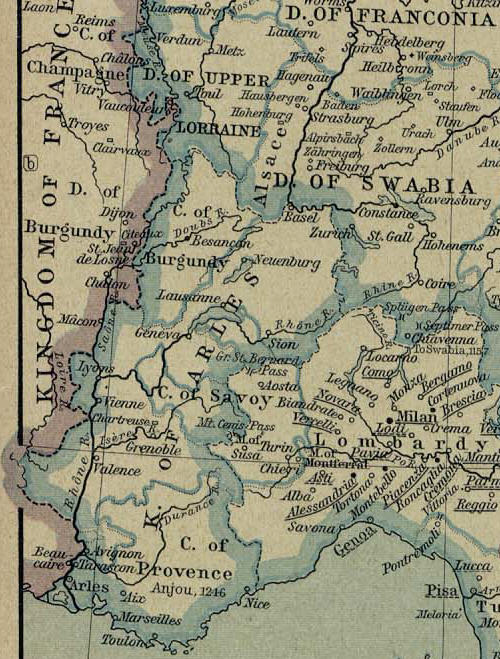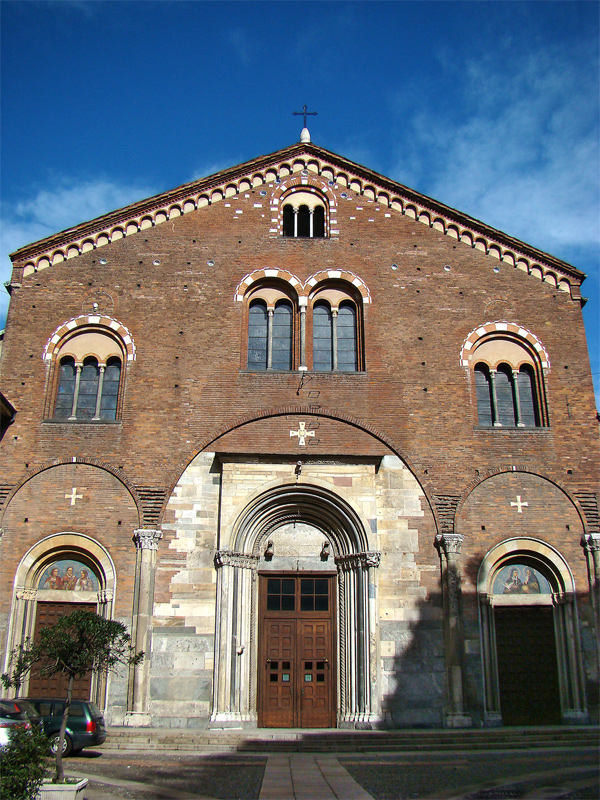|
Aribert II Of Milan
Aribert (or Heribert) (Italian: ''Ariberto da Intimiano'', Lombard: ''Aribert de Intimian'') ( Intimiano, between 970 and 980 - Milan, 16 January 1045) was the archbishop of Milan from 1018, a quarrelsome warrior-bishop in an age in which such figures were not uncommon. Biography Aribert went to Konstanz in June 1025, with other bishops of Northern Italy, to pay homage to Conrad II of Germany, the beleaguered founder of the Salian dynasty. There, in exchange for privileges, he agreed to crown Conrad with the Iron Crown of Lombardy, which the magnates had offered to Odo of Blois. This he did, on 26 March 1026, at Milan, for the traditional seat of Lombard coronations, Pavia, was still in revolt against imperial authority. He journeyed to Rome a year later for the imperial coronation of Conrad by Pope John XIX on 26 March 1027; at a synod at the Lateran he negotiated a decision of the precedence of the archdiocese of Milan over that of Ravenna. He subsequently joined an imper ... [...More Info...] [...Related Items...] OR: [Wikipedia] [Google] [Baidu] |
Ariberto Da Intimiano
Aribert (or Heribert) (Italian: ''Ariberto da Intimiano'', Lombard: ''Aribert de Intimian'') ( Intimiano, between 970 and 980 - Milan, 16 January 1045) was the archbishop of Milan from 1018, a quarrelsome warrior-bishop in an age in which such figures were not uncommon. Biography Aribert went to Konstanz in June 1025, with other bishops of Northern Italy, to pay homage to Conrad II of Germany, the beleaguered founder of the Salian dynasty. There, in exchange for privileges, he agreed to crown Conrad with the Iron Crown of Lombardy, which the magnates had offered to Odo of Blois. This he did, on 26 March 1026, at Milan, for the traditional seat of Lombard coronations, Pavia, was still in revolt against imperial authority. He journeyed to Rome a year later for the imperial coronation of Conrad by Pope John XIX on 26 March 1027; at a synod at the Lateran he negotiated a decision of the precedence of the archdiocese of Milan over that of Ravenna. He subsequently joined an imperi ... [...More Info...] [...Related Items...] OR: [Wikipedia] [Google] [Baidu] |
Rudolph III Of Burgundy
Rudolph III (french: Rodolphe, german: Rudolf; – 6 September 1032), called the Idle or the Pious, was the king of Burgundy from 993 until his death. He was the last ruler of an independent Kingdom of Burgundy, and the last male member of the Burgundian group of the Elder House of Welf. Family Rudolph was the son and heir of King Conrad I of Burgundy (925–993). His mother Matilda (943–980), a member of the Frankish Carolingian dynasty, was the daughter of King Louis IV of France. Rudolph himself had three sisters: Gerberga, who married Duke Herman II of Swabia about 988, Bertha, married to Count Odo I of Blois and secondly to King Robert II of France in 996, and Gisela, who married the Ottonian duke Henry II of Bavaria and became the mother of Emperor Henry II. Reign Rudolph succeeded to the Burgundian throne upon his father's death on 19 October 993 and was crowned king in Lausanne. His reign was marked with turbulence when he made attempts to confiscate several Burgun ... [...More Info...] [...Related Items...] OR: [Wikipedia] [Google] [Baidu] |
Contrade Of Legnano
The contrade of Legnano are the eight historical subdivisions into which the city of Legnano, in Lombardy, in Italy, is divided. They participate annually in the Palio di Legnano. Generality The active contrade The eight contrade of Legnano, whose mottos were introduced in 1955,Ferrarini, p. 178. are: * Contrada La Flora: "let seed be virtue, victory be flower" * Contrada Legnarello: "alone in the Sun"; * Contrada San Bernardino: "the bridge links virtue to glory"; * Contrada San Domenico: "in the green hope"; * Contrada San Magno: "not always winners, but always first"; * Contrada San Martino: "to the end"; * Contrada Sant'Ambrogio: "they hate me, as long as they fear me"; * Contrada Sant'Erasmo: "love and splendor in battle on the hill thanks to the crow". The antagonism and the competition between the contrade are very much felt, with a strong collegiate component and particularly in the period of the year in which the PalioFerrarini, p. 177.D'Ilario, 2000, p. 6. is ... [...More Info...] [...Related Items...] OR: [Wikipedia] [Google] [Baidu] |
Palio Di Legnano
The Palio di Legnano (; known locally simply as ''Il Palio'') is a traditional event generally held on the last Sunday of May in the City Of Legnano, Italy, to recall the Battle of Legnano held on 29 May 1176 by the Lombard League and the Holy Roman Empire of Frederick I, Holy Roman Emperor, Frederick Barbarossa.Il Palio di Legnano This ''Palio'' is composed by a medieval pageant and a horse race. Until 2005 the whole event was named ''Sagra del Carroccio''.Il Palio tra folklore e storia Legnano is subdivided into Contrade of Legnano, eight ''contrade'', each of which takes part both in the medieval pageant and in the hors ... [...More Info...] [...Related Items...] OR: [Wikipedia] [Google] [Baidu] |



